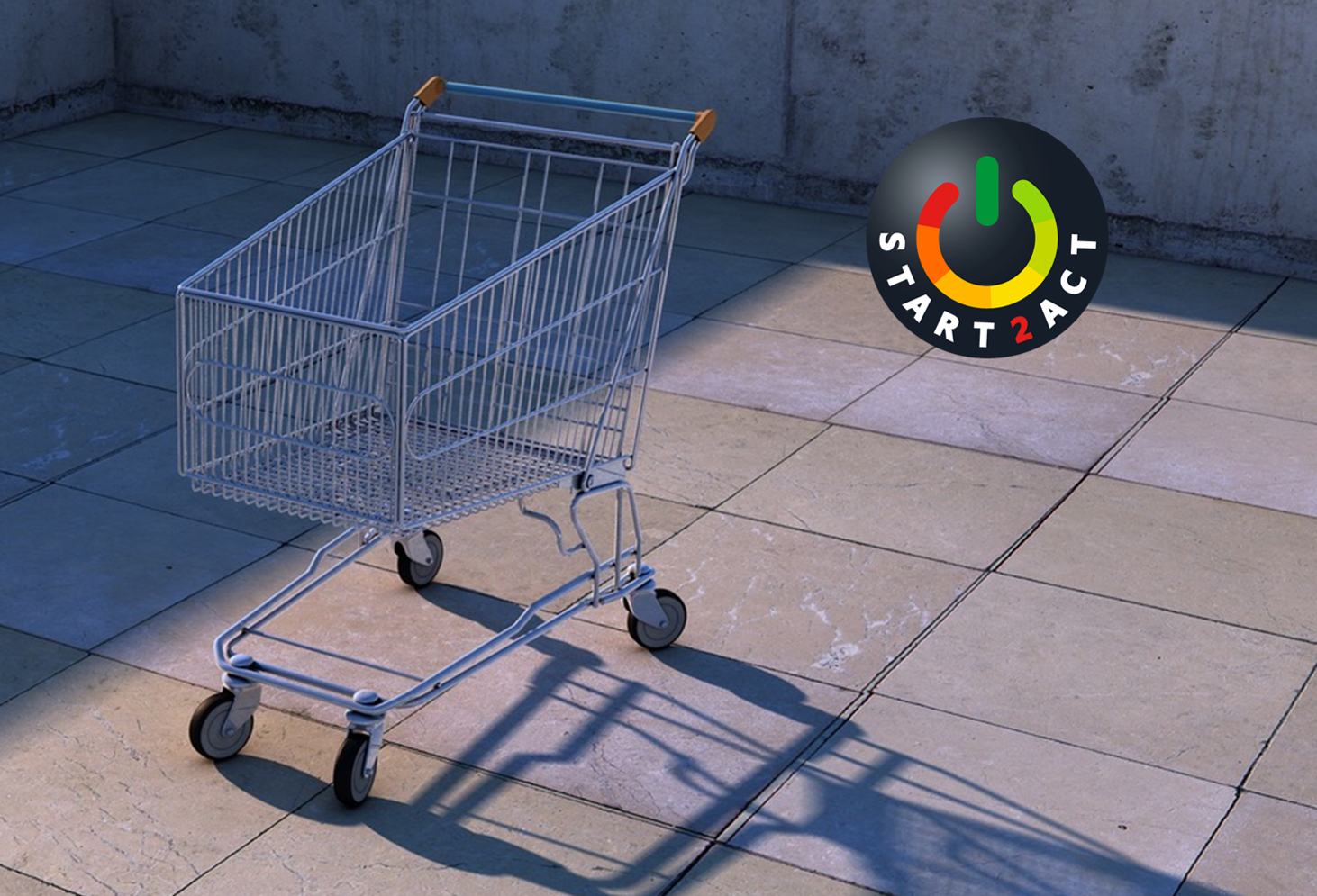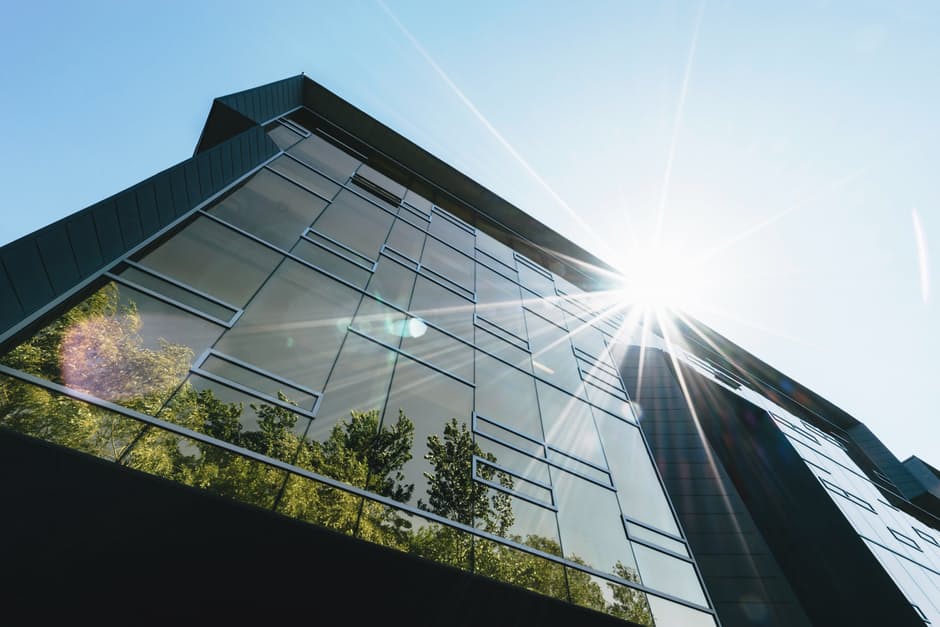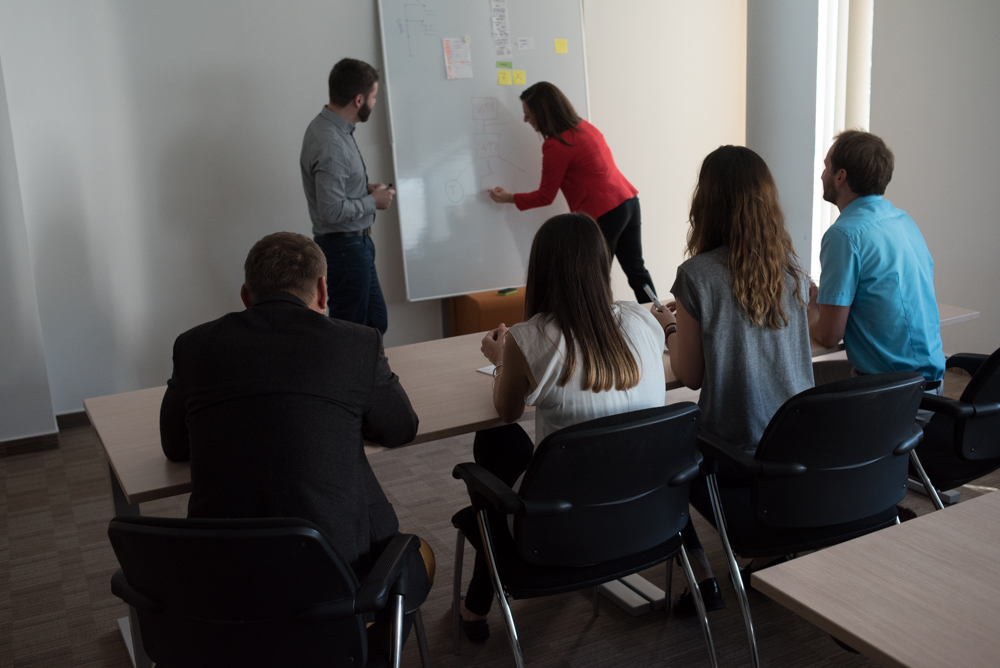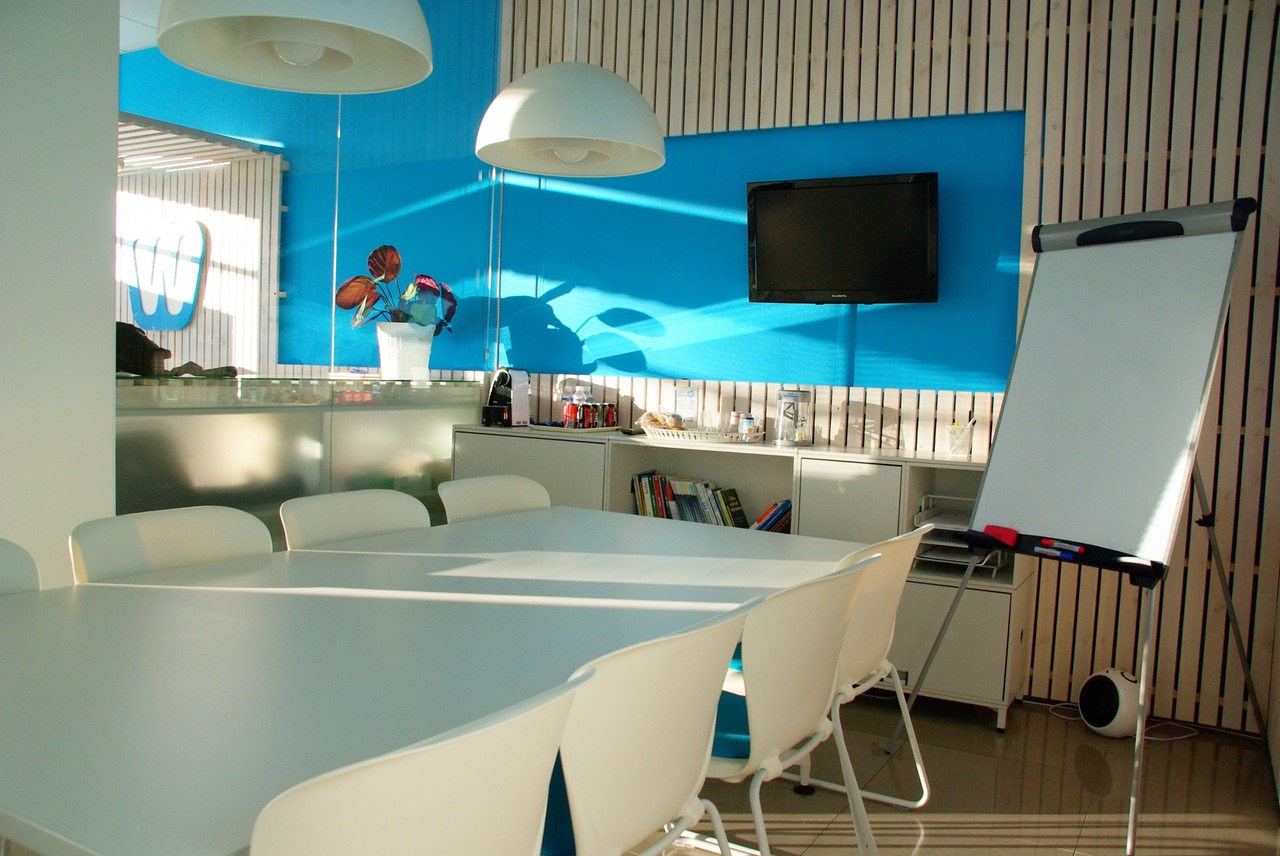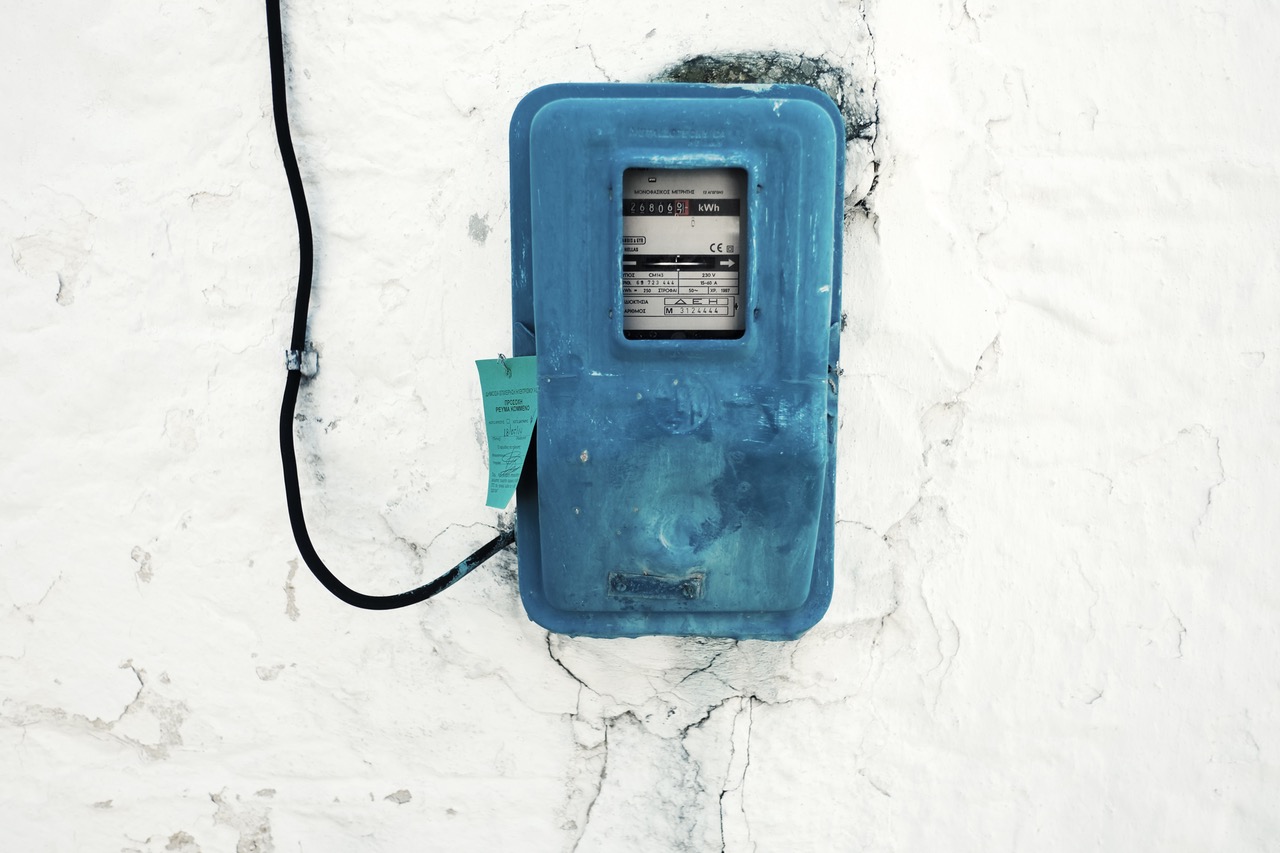Your biggest opportunity for drastically reducing your office energy use is when you move to a new premises.
Introduction
Choosing green offices can help you to limit your environmental impact, reduce your energy bills and improve staff productivity. Searching for a new office space or maintaining the one you have to high environmental standards can be difficult.
On paper new buildings built to the latest codes can appear very efficient but may in fact use more energy than older established buildings. Generally the green buildings have lower operational costs through more efficient use of energy and water. Look carefully and ask the right questions to make the most of your move.
Recommendations
Here are our top four considerations for choosing new offices:
- Focus on energy efficient features: Consider well-designed schemes that use passive features to reduce energy consumption such as enhancing natural daylight to avoid artificial lighting, improved insulation to reduce heat loss and solar shading to reduce the need for cooling in summer.
- Check certification schemes: These can be good indicators of a building’s environmental performance. Examples of certification schemes are given below. Buildings with sustainability certifications are typically more energy efficient and provide other benefits such as enhanced employee wellbeing and productivity.
- Engage the owners and other occupiers: Look out for information on your building, such as user guides, energy monitoring data, current energy strategies and agreed building targets, and consider a green lease.
- Procure for your needs: Once you have selected an office and have signed the lease, you can limit your environmental impact even further by sustainably procuring office equipment.
Read on to find out how to practically take these considerations into account when searching for new offices.
Additional Information
Energy efficient features
Ensure your new building has energy efficient features by looking for the following list. When you are unsure, make sure you ask the building manager.
- Heating, ventilation and air conditioning (HVAC): Have the heating and cooling systems for the building been selected for efficiency? Is the building capable of free cooling from fresh air? If there is mechanical ventilation ask if there is a heat recovery system and what type it is. More information can be found in the save on heating and cooling topic.
[Link to Heating and cooling]
- Controls: Ask how the heating, cooling and ventilation for your office is controlled and make sure the timings are programmed to match your working hours. If you can control the temperatures and ventilation on your floor, make sure the switches and interfaces are clear and simple to use, or ask the building/facilities manager for assistance and guidance More information can be found in the save on heating and cooling topic. [Link to Heating and cooling]
- Lighting: Look for office spaces with lots of natural daylight to reduce the use of artificial lighting. Ask if there are automatic lighting controls such as movement and daylight sensors and check if the lights are LED or compact fluorescent lights (CFLs). More efficient lighting helps to reduce excess heat and the need for extra cooling. More information can be found in the save on lighting topic. [Link to Lighting]
- Insulation: Ask whether the loft or false ceilings and walls are well-insulated. Ideally loft and false ceiling insulation will be 10 inches thick as this can reduce heating loss by up to 40%. Check if doors and windows are well sealed and draft free. More information can be found in the save on heating and cooling topic. [Link to Heating and cooling]
- Window glazing: Check that all windows have double or triple glazing and that the frames are in good condition. Look for a high amount of glazing on the southern-facing side of your building in order to absorb the sun’s heat energy to warm the building during the winter. Make sure that external solar shading or internal directional blinds are fitted or can be added to reduce overheating and glare from the sun in the summer. Ask if the glass has a special coating to prevent heating escaping or entering through the windows. More information can be found in the save on lighting topic. [Link to Lighting]
- Water efficiency: Water flow restrictors and tap aerators are water saving features that can be bought cheaply from most DIY stores. Some buildings may have grey water recycling systems (from sinks and showers) or rainwater harvesting schemes to reduce water consumption for WC flushing.
Engage the owners and other occupiers
Look out for information on your building works and how you interact with it. Buildings generally have an ‘instruction manual’ or Building Log Book that provides information on the equipment and systems installed and how it works. This is often very technical information, but there may also be a ‘Building User Guide’ that informs normal day to day staff about how controls and systems work and the strategy behind various building feature in non-technical language. If these documents are not available speak to the building manager and ask how the controls work and if there is energy usage data from a metering and sub-metering system.
Ask if any environmental assessment or energy audits have been carried out and whether there is potential for operational improvements in the future. Encourage the building owners to set up a periodical discussion forum to cover issues related to the building’s environmental performance. Post Occupancy Evaluations (POE) are surveys for tenants that are undertaken by the building owners or designers to help understand what is working with the building and what is not so that solutions for improvement may be put in place. Ask if this will be or has been done in the building and if any results are available.
You could also consider looking for support from green lease or Memorandum of Understanding (MoU) documents which provide building owners and tenants with a framework on how to manage the building and environmental performance and how it can further be improved. It will enable both parties to understand each other’s environmental aspirations, identify where opportunities for collaboration exist and help them develop an understanding on how improvements can be undertaken and achieved.
Sample green lease clauses and MoU are available online. For more information, also see:
http://www.betterbuildingspartnership.co.uk/green-lease-toolkit
Overview of certification schemes and ratings
Below is a list of some certification schemes that can be good indicators of a building’s environmental performance. BREEAM and LEED are the schemes with the best international reach and most opportunity for global growth.
Where schemes address internal environment quality and wellbeing aspects of buildings they can deliver additional benefits to a business such as significantly improved staff satisfaction, productivity and quality of work. Building asset ratings, such as Energy Performance Certificates, however do not guarantee energy efficiency in operation however and further information about the building should be sought.
Energy Performance Certificate (EPC)
An EPC is required in the UK (variations apply to buildings in EU countries under EU regulations) for domestic and non-domestic buildings that have been built or are being sold or leased. Theoretical Energy efficiency is graded A to G, with A being the best. While EPCs are a good indicator of the potential for a building to be energy efficient, it is not a guarantee of good energy efficiency. For more information on EPCs, also see:
https://www.gov.uk/energy-performance-certificate-commercial-property/overview
Building Research Establishment Environmental Assessment Method (BREEAM)
BREEAM is the most frequently used international sustainability assessment and certification scheme that looks as a broad range of criteria, including transport, materials and wellbeing as well as energy and emissions reduction and applies to a range of building uses and occupancy. Buildings are rated as follows PASS, Good, Very Good, Excellent, up to Outstanding. For more information on the BREEAM certification, also see: http://www.breeam.com/
Leadership in Energy & Environmental Design (LEED):
LEED is an international rating system used to assess building design and construction, interior design and construction, building operations and maintenance. While the assessment is not at broad as in BREEAM, LEED does cover resource efficiency, greenhouse gases emissions reduction and transport. Buildings are rated Certified, Silver, Gold or Platinum. For more information on the LEED certification, also see: http://www.usgbc.org/leed
SKA SKA is an international rating system used to assess energy efficiency for the fit-out, fit-out practices and processes. Eight categories are assessed: energy and CO2, materials, pollution, project delivery, transport, waste, water, and wellbeing. SKA fit-out ratings are Bronze, Silver or Gold. For more information on the SKA certification, also see: http://www.rics.org/uk/knowledge/ska-rating-/
Procurement
Once you have selected an office and have signed the lease, you can limit your environmental impact even further by sustainably procuring office equipment.
When procuring new equipment, set up a plan to only buy according to your needs and invest in energy efficient equipment. Upgrade your old equipment as modern equipment tend to be more energy efficient than older models. Also look for equipment that could combine several functions such as printers / photocopiers / scanner all in one.
 |
|
Always look for products with an A-rated EU energy efficiency label when buying office equipment |
You can use the ENERGY STAR Office Equipment Savings Calculator to estimate your energy consumption and operating costs of office equipment and your savings potential for equipment such as laptops, desktops or printers. View the ENERGY STAR Office Equipment Savings Calculator here:
https://view.officeapps.live.com/op/view.aspx?src=https://www.energystar.gov/sites/default/files/asset/document/Office Equipment Calculator.xlsx
To limit costs when buying new equipment, look out for products in the Energy Technology List (ETL) which is a database that lists over 17,000 energy efficient products from nearly 60 technologies. You can also apply for funding from the Green Business Fund
SME Green Finance / Startup Green Finance
Look for office equipment recycling schemes, which can save both money and resources. For example, consider procuring used chairs and desks, especially in smaller offices where you will not be buying in bulk.
For more information on sustainably procuring office equipment, see the Save on ICT [Link to save on ICT] and Buy smart [Link to Buy smart] topics.

